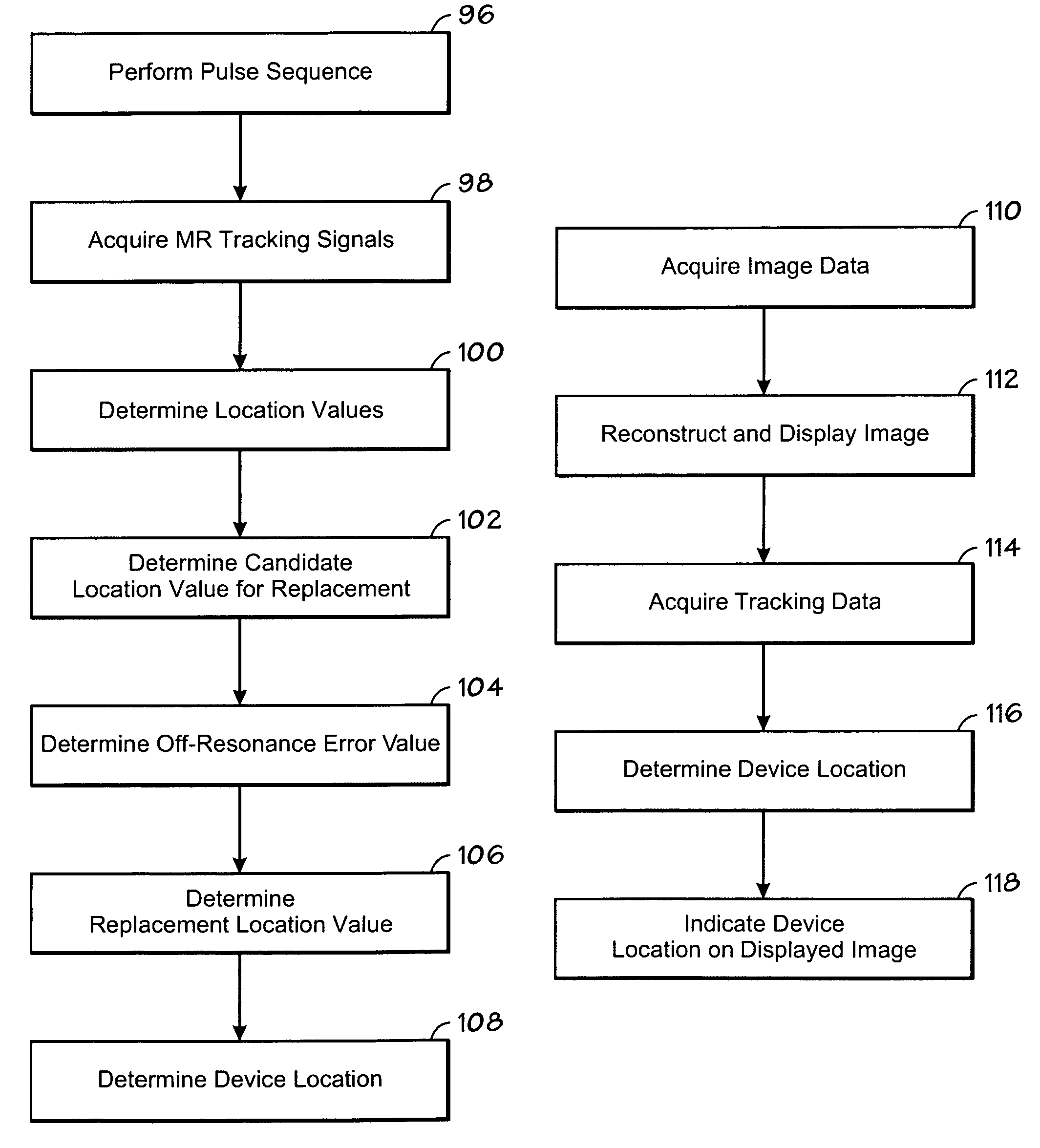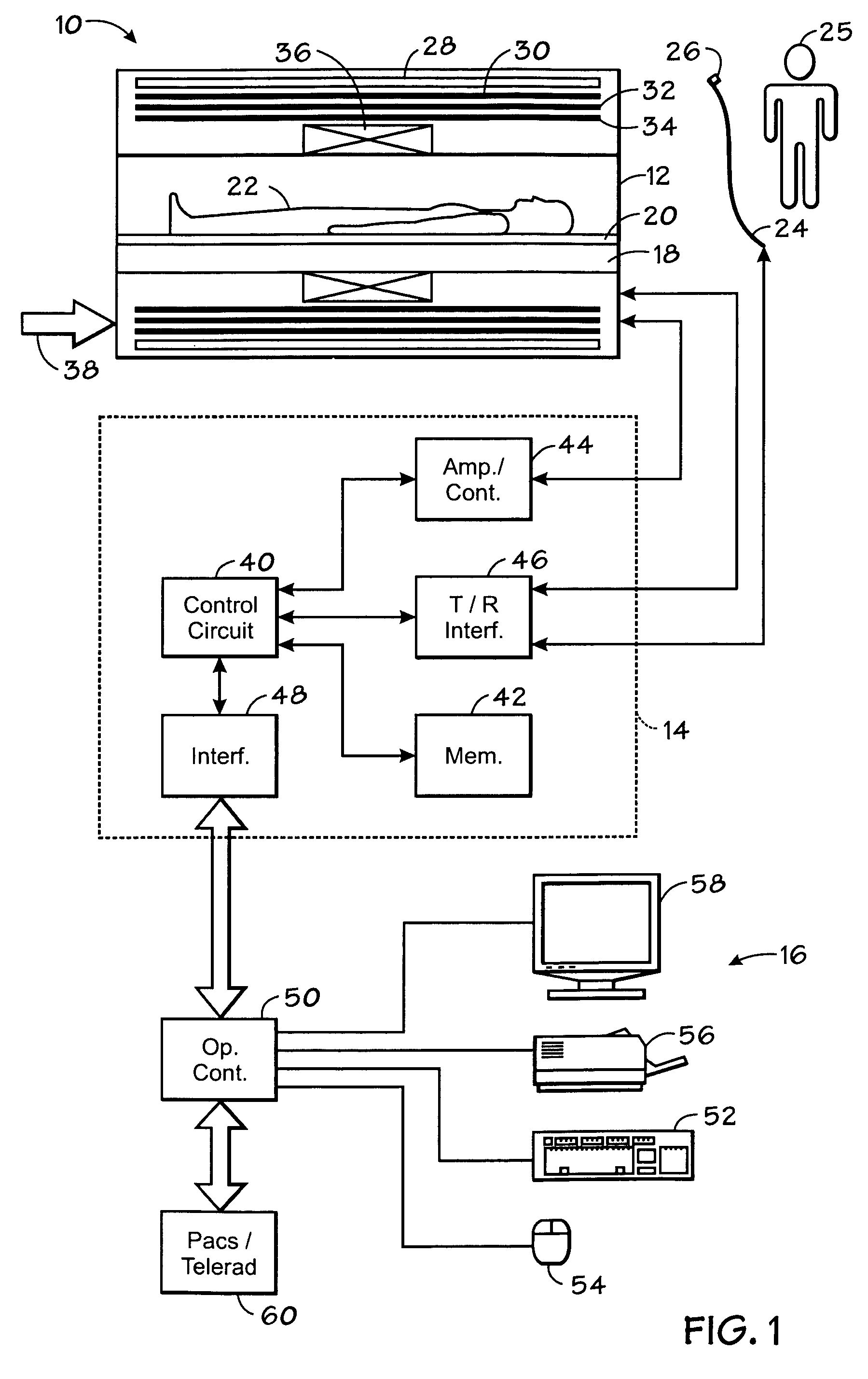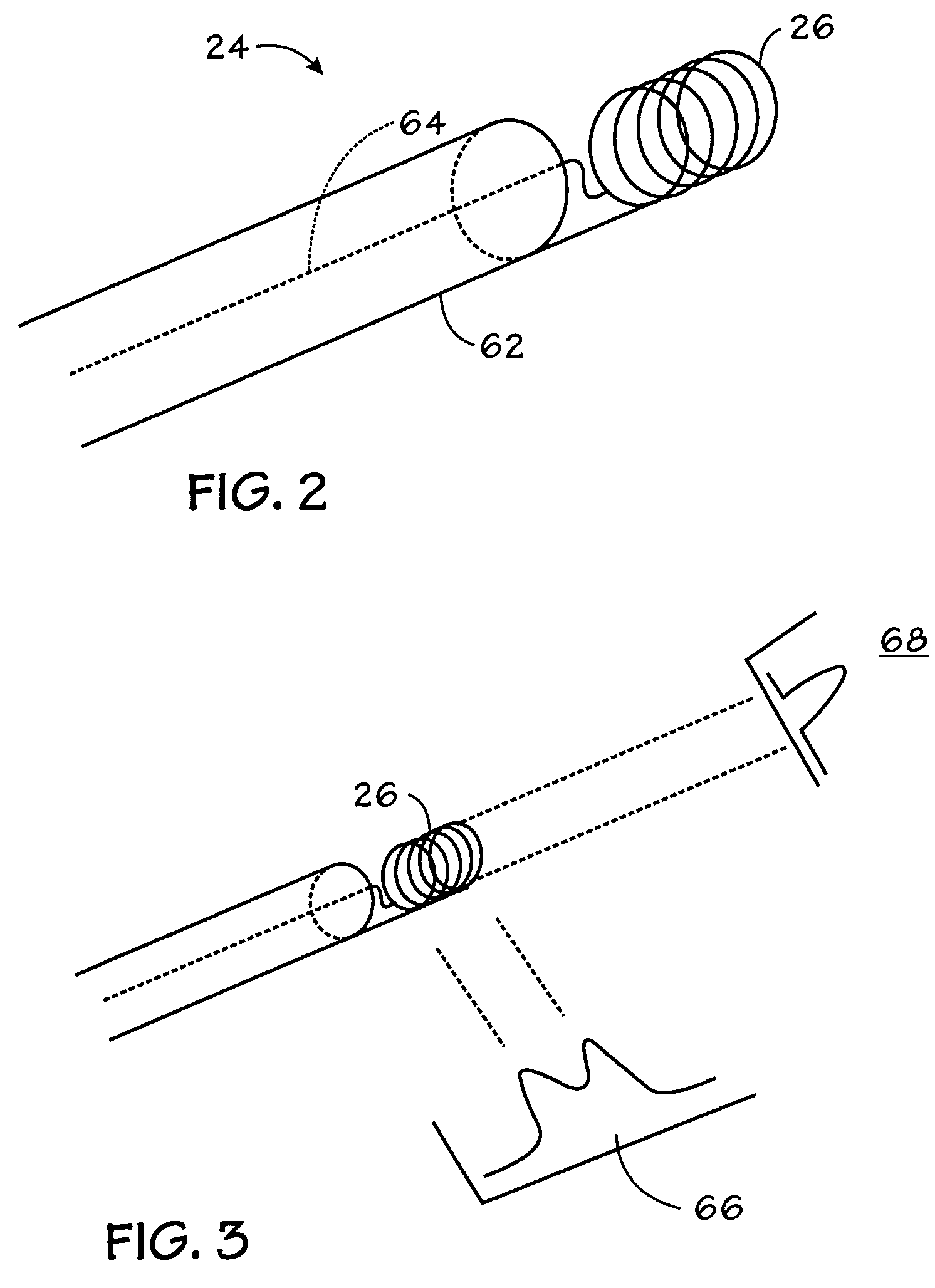Method for multiplexed MR tracking
a tracking method and mr technology, applied in the field of nuclear magnetic resonance imaging, can solve the problems of difficult localization, increased cost, and increased cost, and achieve the effect of improving the signal-to-noise ratio (snr)
- Summary
- Abstract
- Description
- Claims
- Application Information
AI Technical Summary
Benefits of technology
Problems solved by technology
Method used
Image
Examples
Embodiment Construction
[0021]Turning now to the drawings, and referring first to FIG. 1, an MRI system 10 suitable for MR tracking is illustrated diagrammatically as including a scanner 12, scanner control circuitry 14, and operator interface station 16. While MRI system 10 may include any suitable MRI scanner or detector, in the illustrated embodiment the system includes a full body scanner comprising a patient bore 18 into which a table 20 may be positioned to place a patient 22 in a desired position for scanning. As illustrated in FIG. 1, a device 24 to be tracked may be inserted into patient 22 by an operator 25.
[0022]Device 24 may be may be any suitable device for use in a medical or surgical procedure. For example, device 24 may be a guide wire, a catheter, an endoscope, a laparoscope, a biopsy needle, an ablation device or other similar devices. Non-invasive devices, such as external coils used in tracking, are also within the scope of the present embodiments. As illustrated, device 24 includes an ...
PUM
 Login to View More
Login to View More Abstract
Description
Claims
Application Information
 Login to View More
Login to View More - R&D
- Intellectual Property
- Life Sciences
- Materials
- Tech Scout
- Unparalleled Data Quality
- Higher Quality Content
- 60% Fewer Hallucinations
Browse by: Latest US Patents, China's latest patents, Technical Efficacy Thesaurus, Application Domain, Technology Topic, Popular Technical Reports.
© 2025 PatSnap. All rights reserved.Legal|Privacy policy|Modern Slavery Act Transparency Statement|Sitemap|About US| Contact US: help@patsnap.com



